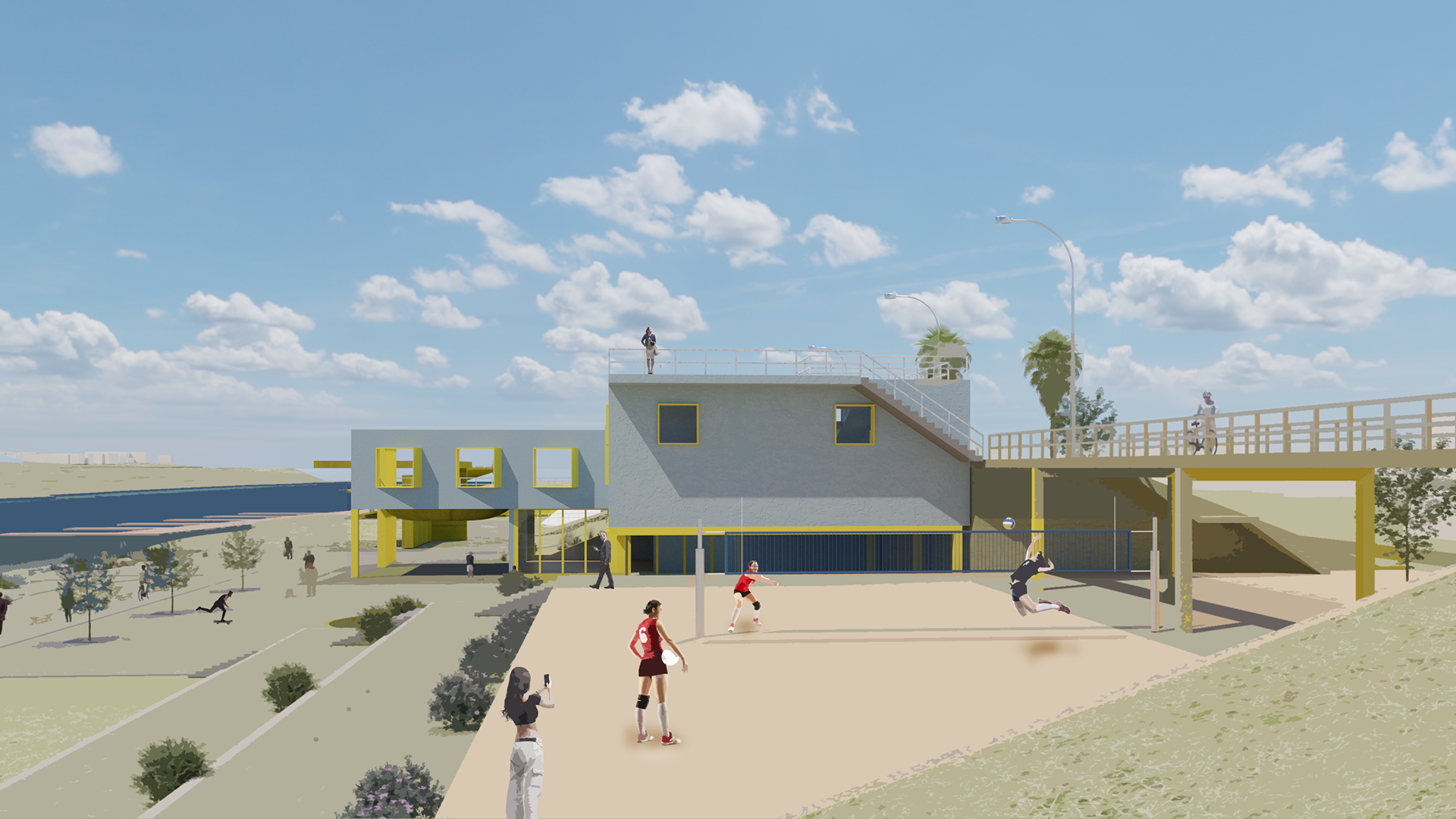In Collaboration with Weilin Berkey
Critics: Evan Tribus, Cathryn Dwyre, Alex Pierre de Looz
Award: Best Degree Project of 2024 Pratt Undergraduate Architecture
Sited: Los Angeles River
Currently, the upcoming Los Angeles 2028 Olympic plan focuses on improving existing infrastructure but neglects the potential connectivity among/between its distributed venues. Layered with the existing competitive events, we propose incorporating new recreational and leisure Olympic events that the local fans can participate in along the LA River. Experimenting with combinations of LA vernacular typologies and Olympic programs is critical to our distributed venues’ longevity and future use. Moreover, having an in-depth understanding of the LA vernacular landscape will allow us to revitalize the forgotten concrete banks of the LA River and its connection to the city. Sponsored by the Olympics, The Intragames uses vernacular typologies and public spaces to encourage locals to participate in collectivity during and after the games.




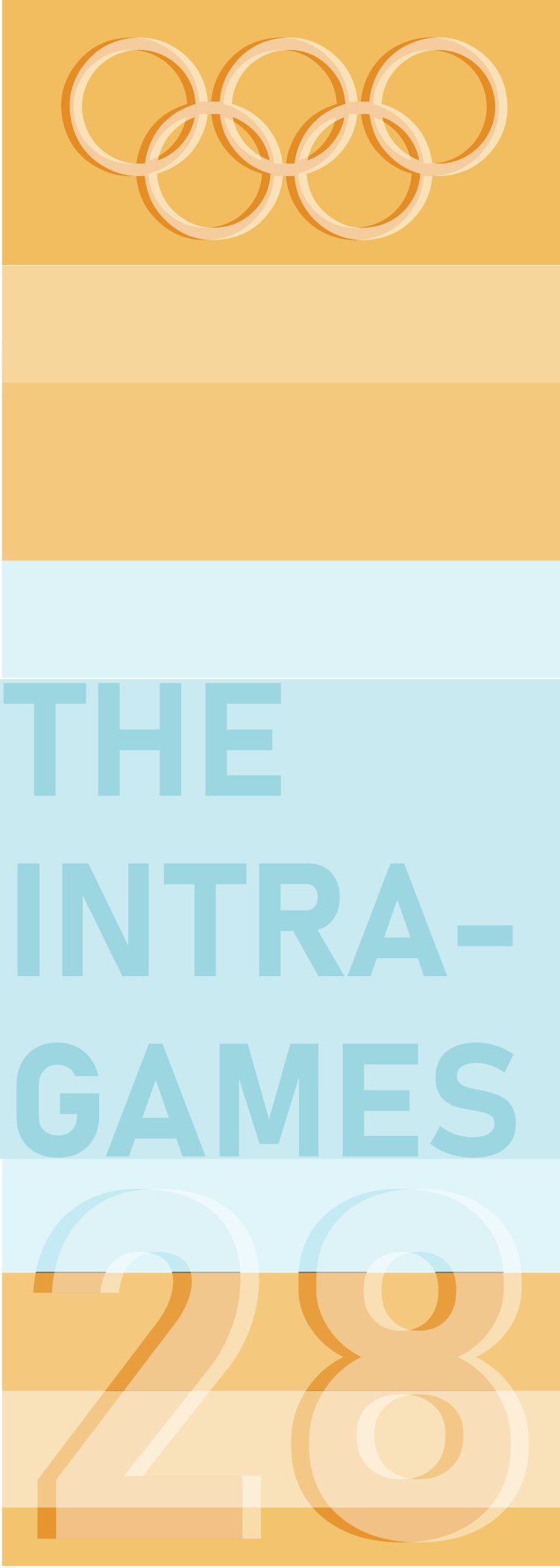

Olympic Ticket Design Front - The stripes on the front of the ticket represent the LA River's edge


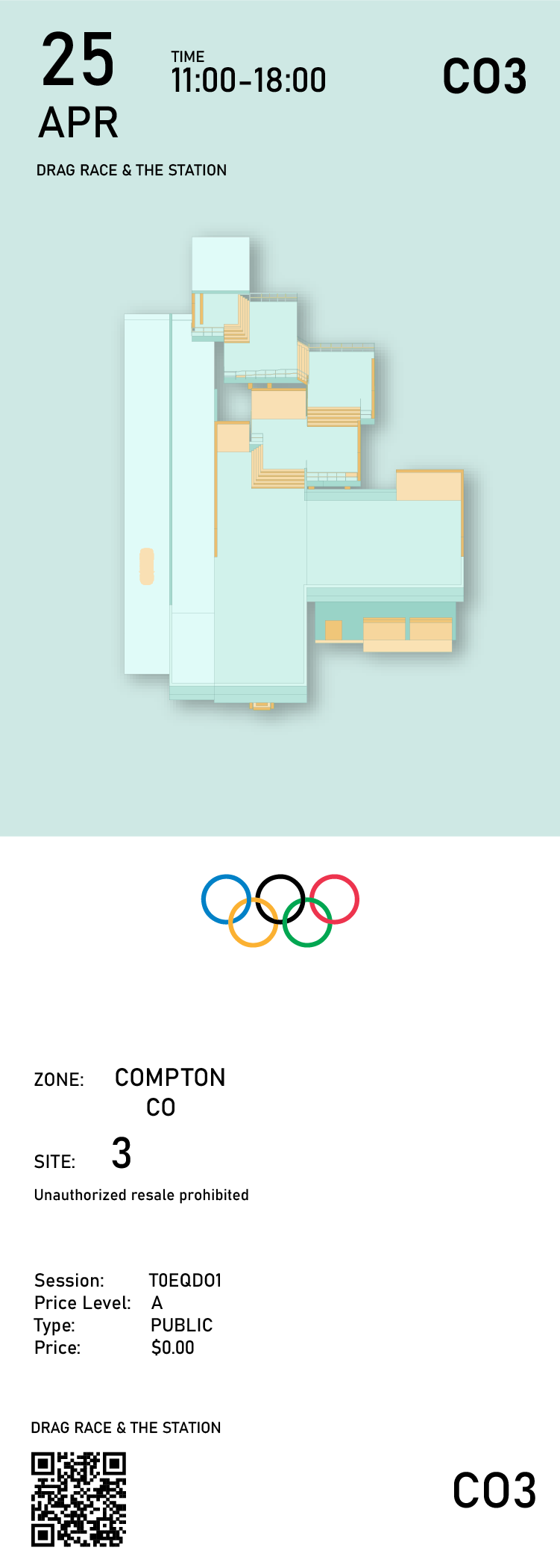



Olympic Ticket Design Back - features a zero-degree axonometric drawing of each scheme
These tickets are for the six different sites in Compton and Long Beach. We wanted our palette to reflect the pastel hues of LA’s nostalgic architecture and the city's most loved site, the sunset. Our color palette riffs off of the graphic identity of the LA 84 Olympic Games, which referenced the traditional colors of Mexico due to the city's large Hispanic population. These tickets were distributed as keepsakes to remember the games at our final presentation.
Siting the upcoming Los Angeles 2028 Games and their new approach to refrain from building new infrastructure, there is an effort to avoid the previous failures of the Olympics. Ironically, the current LA Olympics has sited athletic venues along the river but completely ignores this fact and the river itself. We propose adjunct games to happen alongside the Los Angeles River. These unofficial games target a more local audience, including Los Angeles and its neighborhoods. LA is an atomized city, so our strategy for implementing the Olympics along the river is also distributed. The official Olympic programs we want to include are the existing Rowing 2k and the introduction of the Car Show as a new Olympic event. By revitalizing the River, we hope to move them more locally.


In Compton, where there is little water and the river bed is concrete, we focus on adding more porous surfaces.
In Long Beach, where the river contains more water, and the riverbed is earthen, the vegetation strategy is more about ecotones and terracing.
Vernacular allows for social differentiation and sponsors the attraction of public destinations for its locals. The vast autotopic neighborhoods of LA require identification, through which the vernacular becomes a roadmap of familiarity.
We reference British architectural theorist and historian Reyner Bahnam’s Four Ecologies of LA to further our understanding of LA's vernacular typologies. He emphasizes the importance of the relationship between the car and the architecture.
This diagram highlights the vernacular typologies of LA, all of which involve the car as a constituent. We've broken down the typologies into their unique elements, which can be remixed in combination with our program, landscape, and viewing elements. We focused on three typologies: the Dingbat, a residential typology; the strip mall; and the gas station. The dingbat is a two-story bar building with a cut-out on its first level for car parking underneath. The strip mall is a one-story flat-roofed bar building separated by multiple interior partitions. The strip is designed for easy car access. The gas station is a pavilion style with its structure offset from its edges and has a convenience store. These core elements add up to create these typologies and are the variables we used to hybridize vernacular and program, which we explored through these models in the early stages of our design.
LA ‘VERNACULAR’ HYBRID STUDY
By construing a series of 20 study models combining LA vernacular and program, we extracted a methodology for programmatic and vernacular interventions.







Iteration Sketches
Our research led us to develop a catalog of elements we combined into our intragame formulas. These elements include programs, modes of viewing, and landscape strategies.
Catalog of Program, Viewing & Landscaping Elements
The LA River was previously an estuary with tall grasses, willows, cottonwoods, many bird species, and the steelhead trout, the river’s native fish. By utilizing ecotones, gabions, collection ponds, and breaking through the concrete barrier of the river bed, we can restore permeability to the river and allow these ecologies to return to it. Additionally, using tunneling, bridging, and terracing moves, we can dissolve the river’s edge and safely bring people and cars to the river.



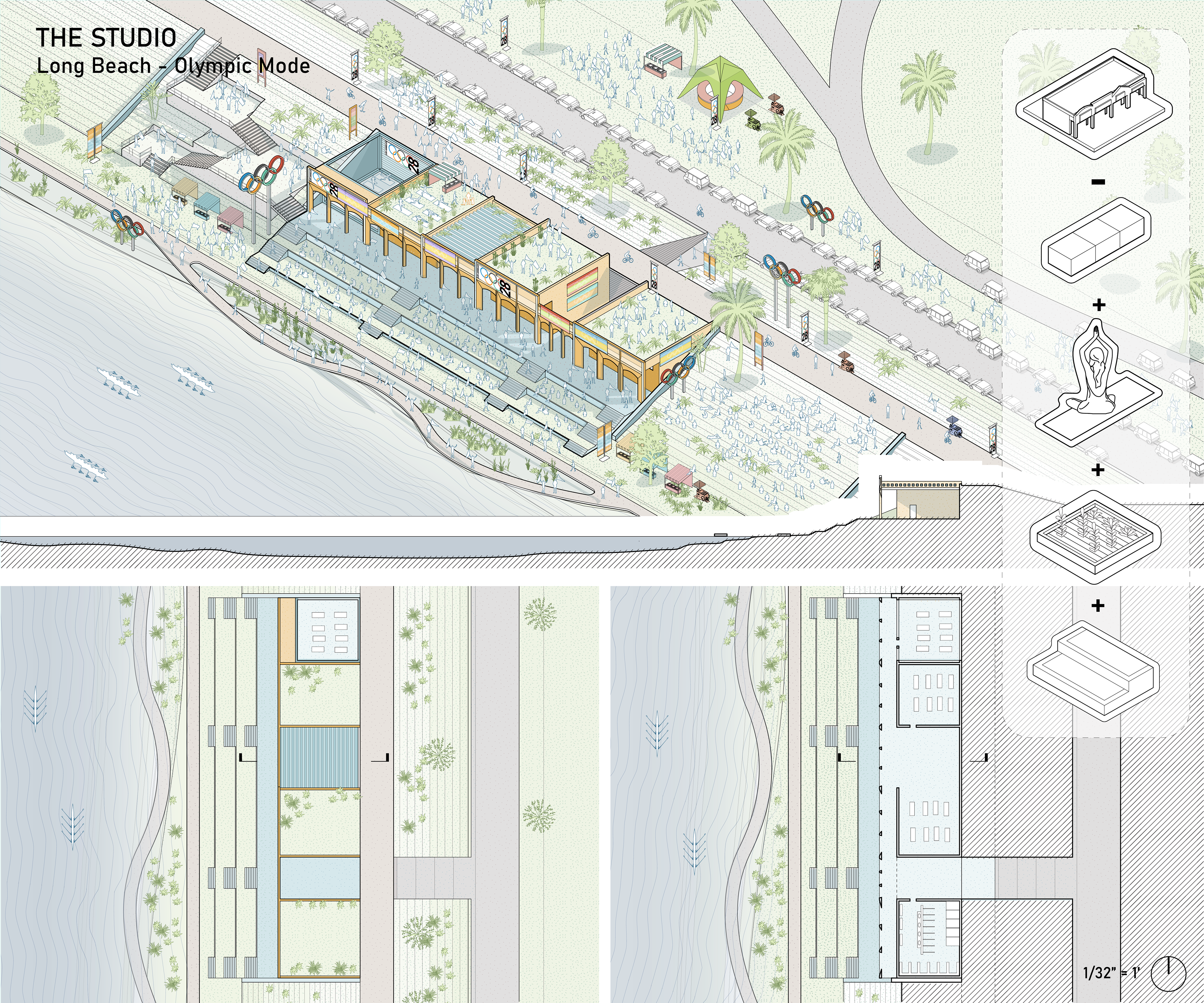

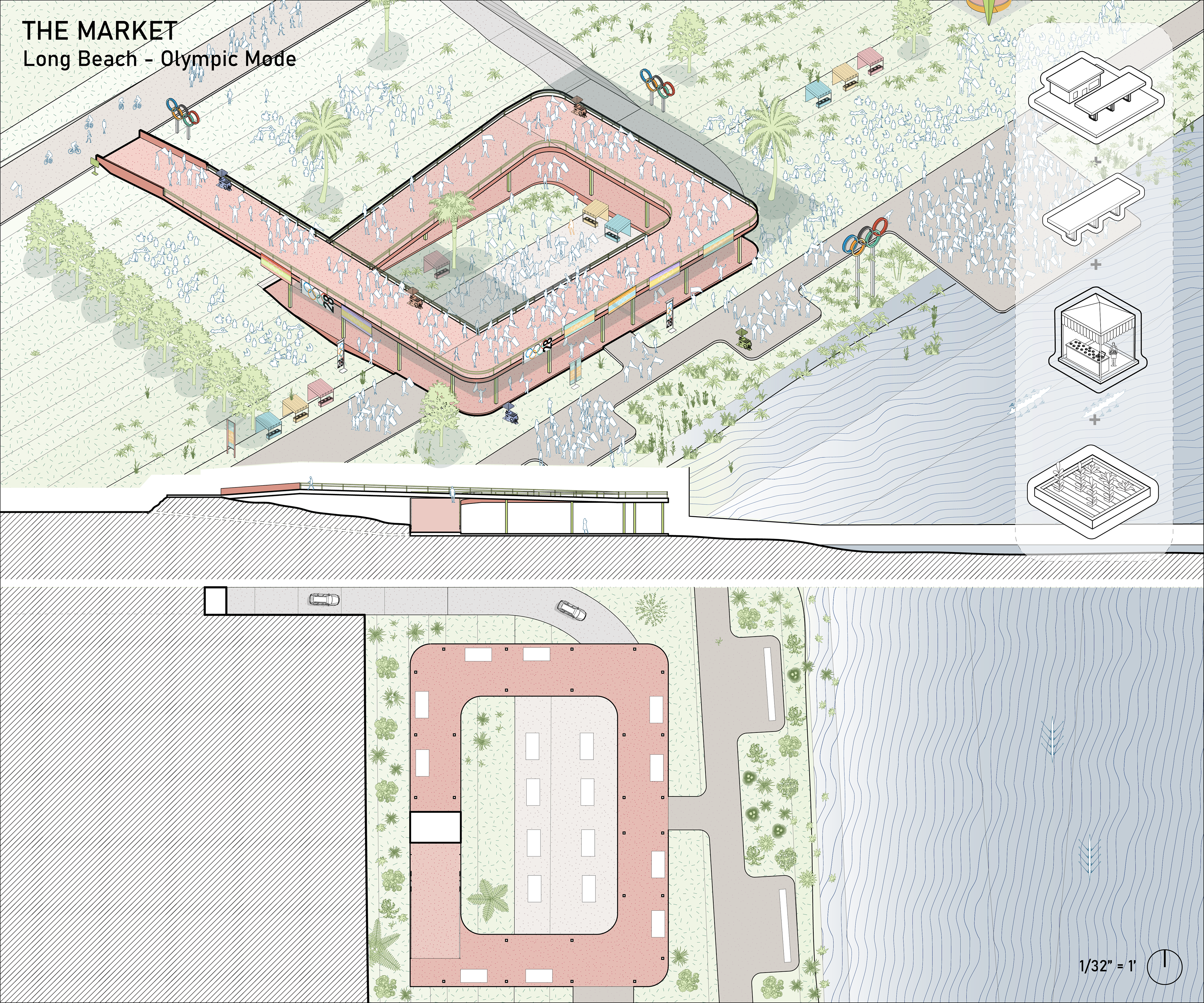
We developed a matrix combining elements like programs, viewing modes, and landscape strategies into our intragames formulas. By experimenting with these familiar elements, we explored how new public programs can mix with dingbats, strip malls, and gas stations. We created these schemes for both neighborhoods to understand how their unique qualities affect this hybridity



Midterm Models
Models exhibit post-Games experience, showing our process for our invention and revitalization along the River's edge.
Compton "Dingbat" Model in Olympic Mode
Long Beach "Dingbat" Model in Olympic Mode
By designing for the after by engaging hyper-local elements rather than designing for just the 16 days that the Games take place, we can ensure the longevity of the venues. The Intragames will surpass the short timeframe of the Olympics, leaving new integrated publics along the river and changing the lasting impact of the Games.







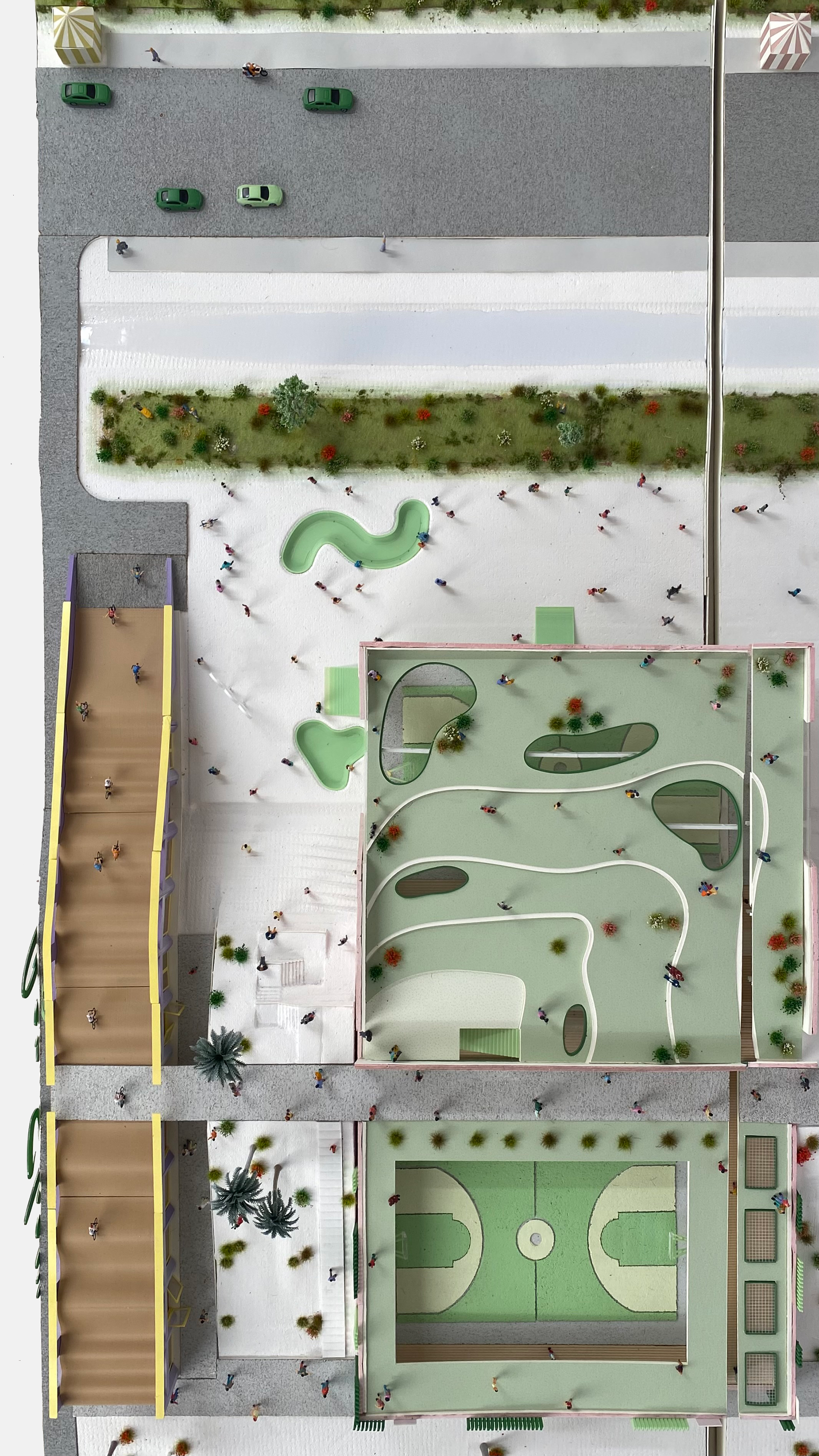
Aerial View of Final Presentation Models



